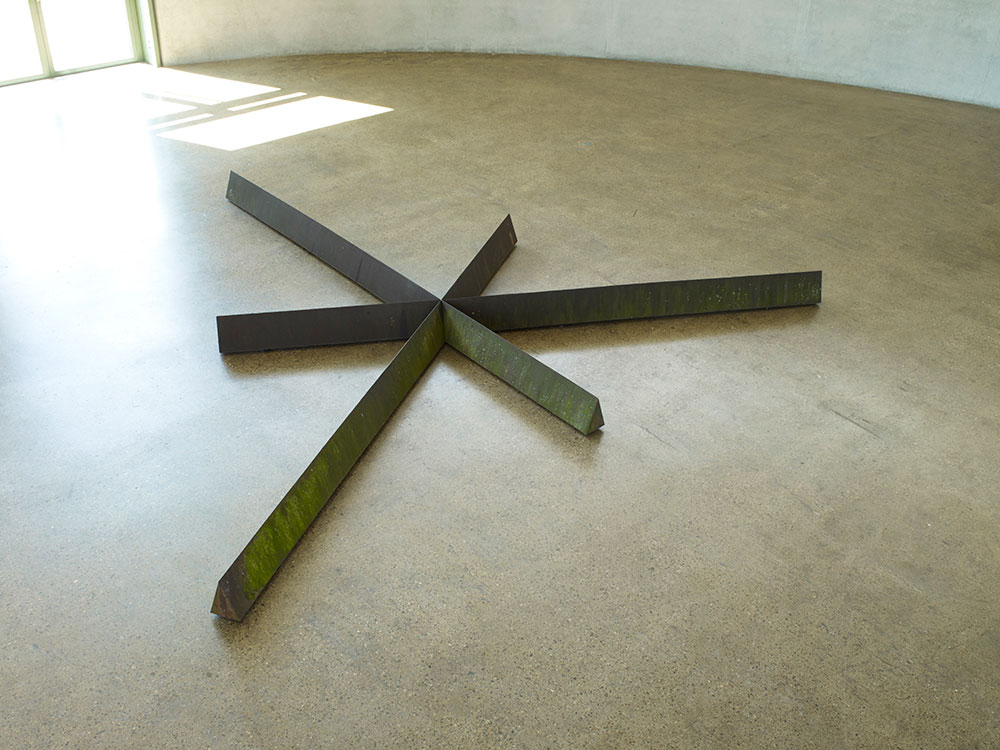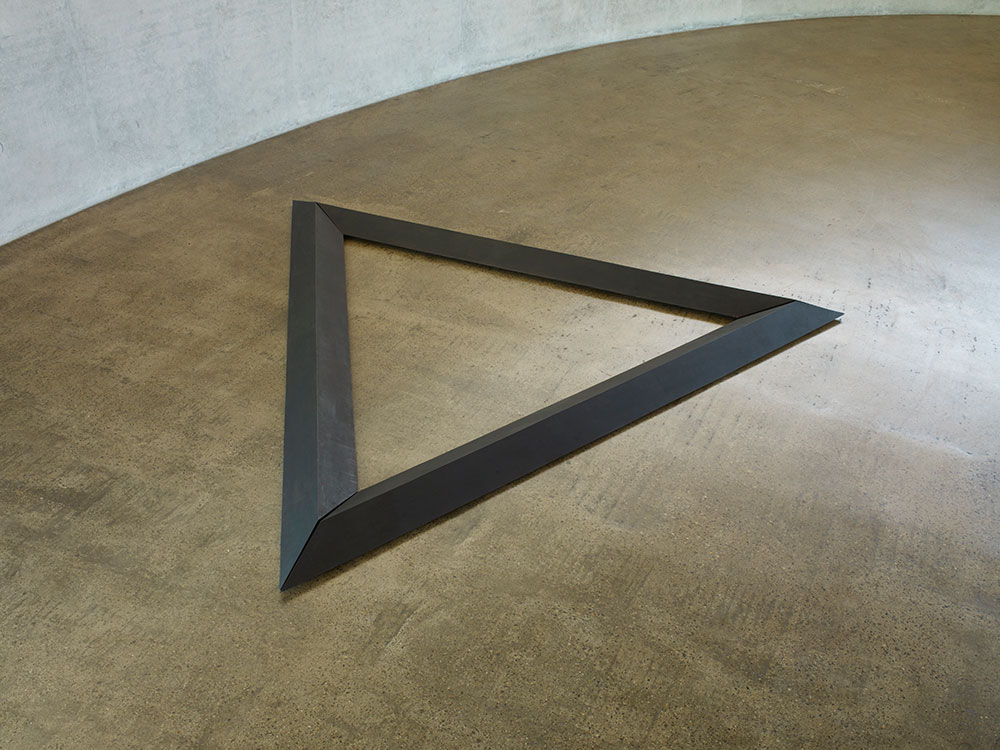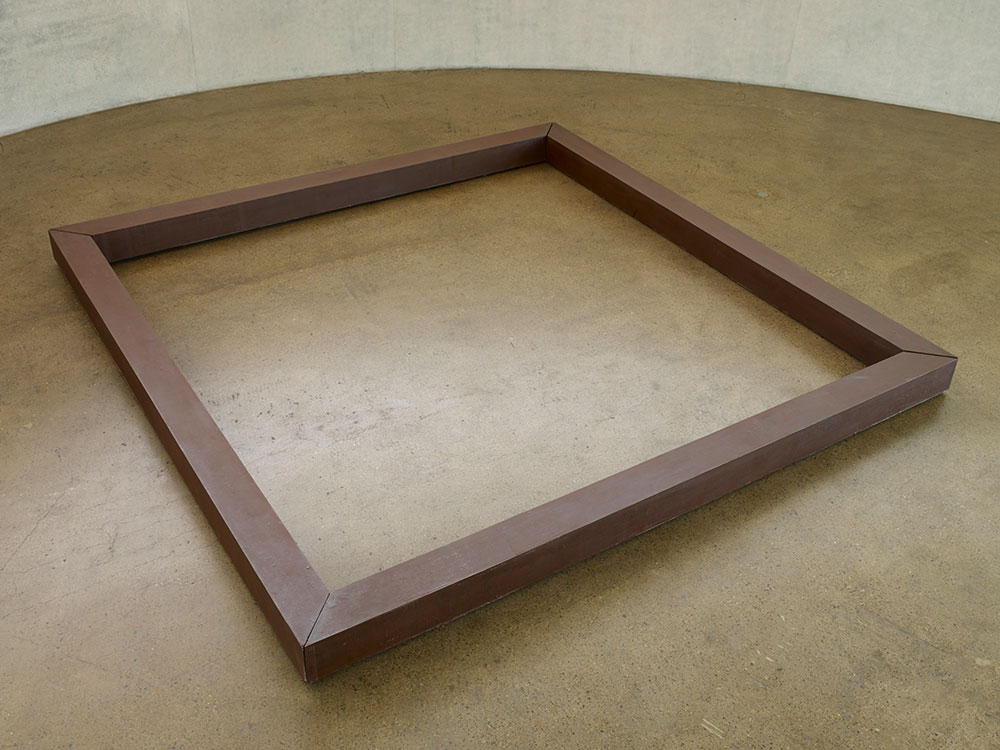ART-PRESENTATION: Bruce Nauman-Models
 Bruce Nauman thinks in terms of models (potential forms) and that is why drawing plays such a central role in his work and in the exhibition “Models” at Skulpturenhalle in Neuss. Drawings reveal the essence; they indicate what is conceivable. Drawings and models alike are stylistically unbound and open up the realms of imagination.
Bruce Nauman thinks in terms of models (potential forms) and that is why drawing plays such a central role in his work and in the exhibition “Models” at Skulpturenhalle in Neuss. Drawings reveal the essence; they indicate what is conceivable. Drawings and models alike are stylistically unbound and open up the realms of imagination.
By Efi Michalarou
Photo: The Skulpturenhalle in Neuss Archive

In the early 1970s, Kröller-Müller Museum in Otterlo invited Bruce Nauman to create an outdoor sculpture. For this, he proposed a bowl-shaped underground room accessed through a shaft. Nauman had a very clear idea about this approach, which he outlined in drawings. Although the project did not come to fruition, Nauman continued to pursue this theme. It turned out that the imaginary spaces were related to his early corridors, in that the shafts and tunnels evoked a disturbingly constricted situation. His “Circle” conceived in 1977 and cast in iron in 1978, represents the first model for an underground tunnel complex that Nauman went on to create on the basis of a drawing. The geometric form does not rest on the ground, the cast pieces are propped up on small wood blocks. Nauman spoke of a scale somewhere between 1:12 and 1:40, meaning that the actual tunnel would have had a diameter of between 60 and 200 metres. Nauman dismissed such a project: “I decided I wasn’t interested in building some of the projects on any scale except that in the model. So, even though these aren’t to be built, I still call them models”. One fundamental aspect of the circular tunnel was the cross-section in the shape of an acute triangle; for the second model he had cast (a triangle of the same dimensions) Nauman chose as the cross-section an obtuse-angled triangle. As a third element in this group, exhibited here for the first time together, he has added a square, with a square cross-section. The three differently shaped pieces are visibly built from separate parts and they don’t constitute a coherent geometrical sequence; they are individual models. The fourth model “Equilateral Triangle” also created in 1977 and with the same cross-section as “Circle”, does not have a closed form. It consists of three 5-metre axes in star-shaped alignment, divided at their point of intersection to two parts of differing lengths. On joining the end points together, the lines would form equilateral triangles. Just how important basic geometric forms are to Nauman is evident in the fact that they can be found, once more, in his 1981 “South America Square”, “South America Triangle” and “South America Circle” as well as in combination in his three-part, ceiling- suspended work “Square, Triangle, Circle” (1984). The wall piece “Model for Room with My Soul Left out, Room That Doesn’t Care” like many of Nauman’s works of the 1980s, it is made of everyday materials. The title emphasises that the room in question is no neutral space, but rather, that the room itself is the agent instead of the subject entering it. On the face of things, it is an abstract, cross-like structure; the observer can see inside through the arms of the cross, where there is a figure standing in the intersection of the tunnel shafts, protected by the walls, yet exposed to view. For his bronze cast “Henry Moore Bound to Fail” Nauman used a photograph of his own back and heightened the illusionary effect of the wall relief by pressing his pullover into the modelled wax. He applied the dual meaning of «bound» as a lever to undermine this illusion and, with that, any assumption of a hidden self-portrait. While it is the artist who appears with his arms bound in this wall piece, it is the hands of the pianist that are symbolically bound in his audio installation “For Beginners (Instructed Piano)”, for the pianist cannot play freely, but has to execute a series of finger exercises according to prescribed instructions. The hand plays a primary role in Nauman’s oeuvre, he uses the hand as the immediately available instrument that carries out his intentions and which is always there, right in front of his eyes, bound to him both inwardly and outwardly, at once part of the subject and its object alike. If the hand is shown on its own, separated from the body, displaying only the movements and intertwining of the fingers, as in his white bronze casts of pairs of hands, then the hand appears as an object; the way the hands turn from the horizontal to the vertical underlines the distance to this familiar body part. The hand with a wine glass balanced on its back, out of its reach, is alienated from its function as an instrument; and yet, if it moves, the wine will spill. The drawing that Nauman sketched to outline this idea underpinned the photographic montage for the print series “Vino Rosso”.
Info: Curator: Dieter Schwarz, The Skulpturenhalle in Neuss, 41472 Neuss/Holzheim, Lindenweg, Junction Berger Weg (Near Raketenstation), Duration: 4/9-13/12/20, Days & Hours: Fri-Sun 11:00-17:00, https://thomas-schuette-stiftung.de

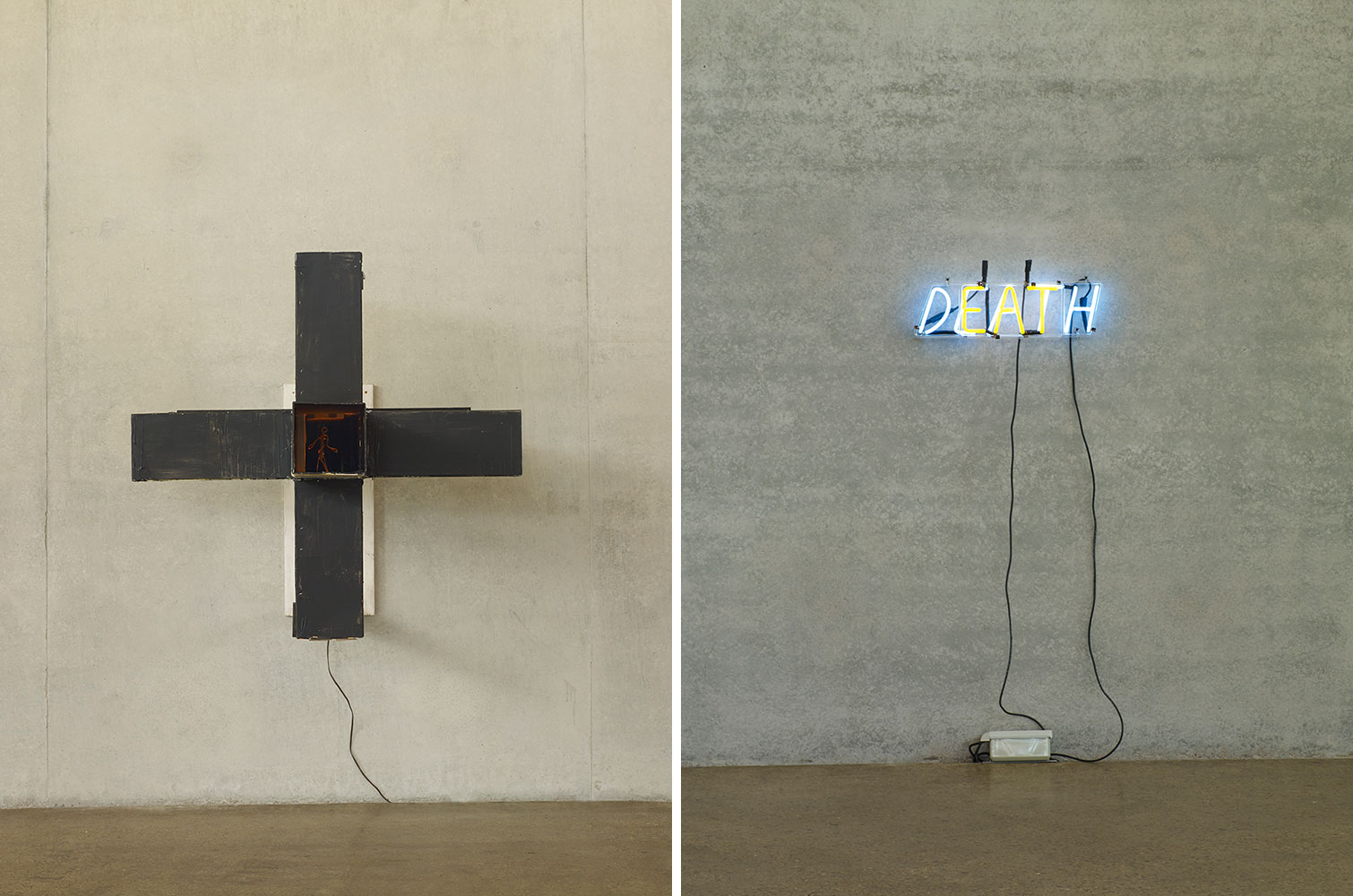
Right: Bruce Nauman, Eat/Death, 1972, Neon tubing with clear glass tubing suspension frame, 19 x 64 x 5,5 cm, Private collection, Photo: Nic Tenwiggenhorn, © VG Bild-Kunst, Bonn 2020
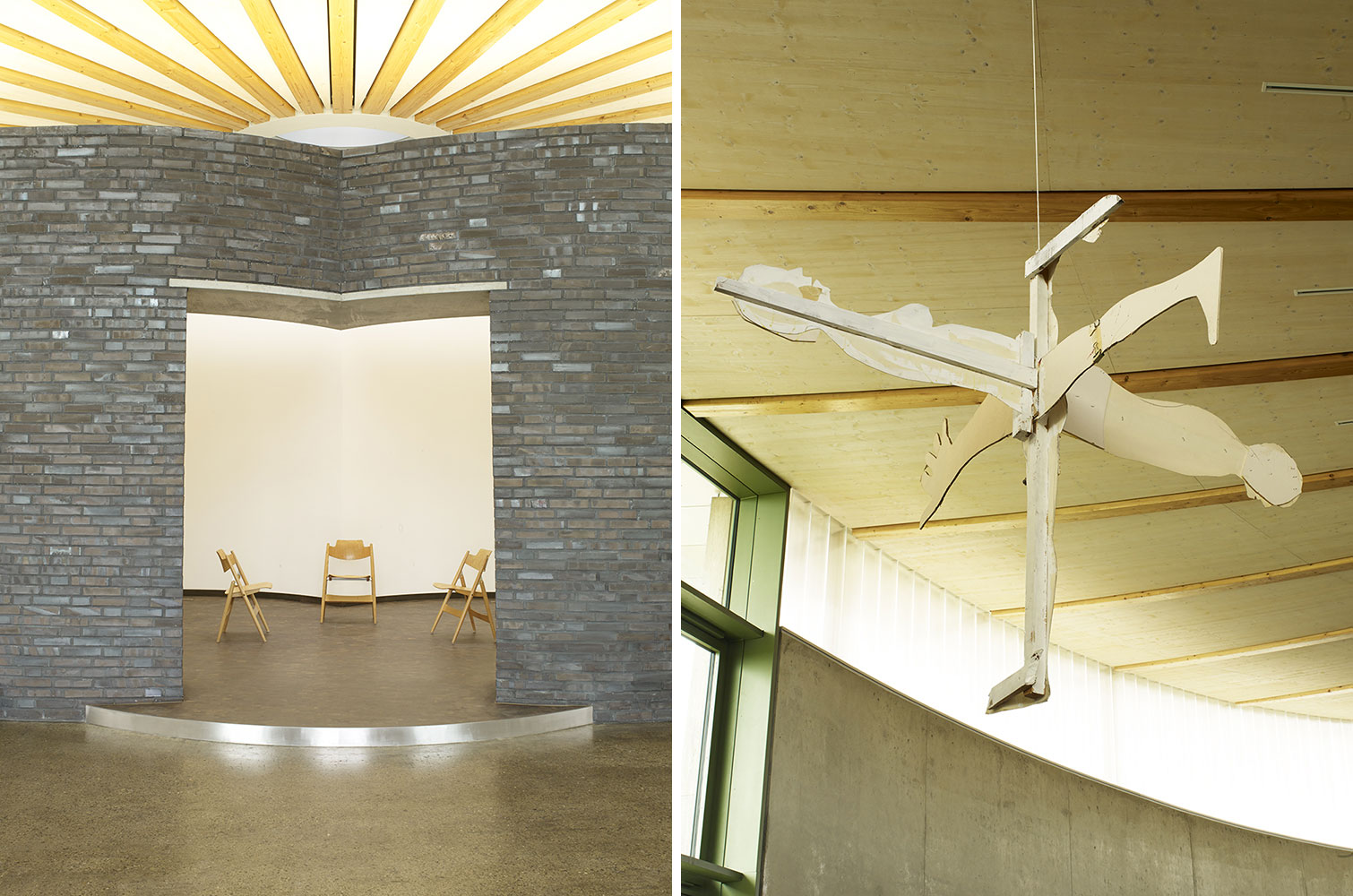
Right: Bruce Nauman, Untitled, 1986, Foam board, cardboard, wood, rope, acrylic paint, 140 x 175 x 195 cm, Sammlung Fischer, Photo: Nic Tenwiggenhorn, © VG Bild-Kunst, Bonn 2020
